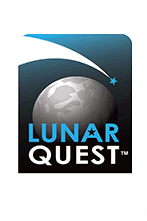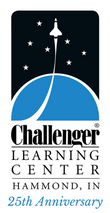Simulated Missions (5-9)
SIMULATED MISSIONS
A Challenger Learning Center mission is more than a field trip or a computer game. Our mission simulations put students into learning environments based on the practices NASA uses to prepare astronauts. It’s as real as it gets without needing a spacesuit.
While students become astronauts and engineers at Challenger Learning Centers, they are solving real-world problems as they share the thrill of discovery on missions through the Solar System.
- Length: 2 hours
- Class Size: Maximum 34 Students
- Price: $650 Per Class
*If you are looking for funding and/or need a letter to present to your school district or administrator to justify a field trip to Challenger Learning Center for a Simulated Space Mission, see below for a sample letter that you can edit to meet your needs.

HOW A CHALLENGER LEARNING CENTER MISSION SIMULATION WORKS:
Prior to the visit, educators receive helpful information and resources to guide students in understanding the theme and topic of their mission and to work on communication, teamwork, and problem solving skills. Educators have the option of connecting with our Lead Flight Director for any guidance needed to prepare for the mission.
After arriving at the Challenger Learning Center, students are partnered up and assigned to one of nine teams: Communications, Navigation, Space Weather, Biology, Rover, Life Support, Medical, Geology, or Robotics.
One student on each team is assigned to Mission Control, while the other team members are transported to the space station (at mission midpoint, the partners exchange places so every student can experience both learning environments).
During the mission, students must accomplish specific tasks in order for the mission to be a success. For example, astronauts on board the space station build space probes, monitor life support functions, conduct experiments on items taken from the surfaces of Mars or the Moon, and plot navigation courses for the spacecraft. Engineers at Mission Control support these endeavors by answering the astronauts’ questions, providing necessary research, and interpreting the data they are given.
Students become engineers, scientists, and Mission Control specialists working together as a crew to accomplish their goals in one of three missions we offer: Expedition Mars, Lunar Quest, or Operation Comet. In the simulators, students test their decision-making skills, solve problems, and communicate by alternative means during this innovative, space-themed, immersive STEM experience.
Have questions or curious about what you'll need to know for your upcoming Challenger mission? Call (219) 989-3250 or email hunter@clcnwi.com to speak with our Lead STEM Educator so she can walk you through the process over the phone or Zoom!

OPERATION COMET
NEW! First Flight 2024 - With a large Comet passing close to Earth in a short period of time, the Space Station crew has the chance to send out a robotic probe to study this Comet. The study could be groundbreaking, but goals quickly change when it is determined that the single Comet has broken apart into a second comet and that is on a direct collision course with Earth. The team must quickly reengineer their robotic probe so that it can stop the second comet and complete their new mission objective, to save the world.
This mission is flown from March – June.

EXPEDITION MARS
The year is 2076 and this crew is tasked with searching for water and life on the Martian surface! Carrying parts to build a ROV for hydrological exploration, the Mars Transport Vehicle (MTV) also carries unmanned drone aircraft to assist in surveying the Martian landscape. However, when crew members discover a threat to their MTV base, they must act quickly to save their crew and their station!
This mission is flown from September – January

LUNAR QUEST
NEW! First Flight 2023 - In the not so distant future, NASA launches a Rover to the Moon to explore new areas and collect critical scientific data. However, the Rover lost power before any of the findings were sent back to Earth. To solve this problem, NASA has decided to send human astronauts back to the Moon! A team of astronauts on a Spacecraft and back at Mission Control will work together to search for a long-term habitat on the Moon. However, when the crew receives troubling readings from below the Moon’s surface, the two teams must make critical decisions to turn a potential catastrophe into NASA’s finest hour!
This mission is flown January - February.
